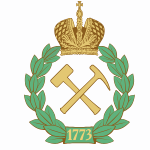Introduction to Saint-Petersburg Mining University
Saint-Petersburg Mining University is the first engineering university in Russian history and one of the oldest technical universities in Europe. It is located in Saint Petersburg, Russian Federation. The university has close cooperation with global oil, gas and mining companies and governments. Its museum has the world's finest collection of gemstones and mineral samples.
Overview
Student size: There are currently more than 16,500 college students.
Faculty: There are 5,000 academic staff.
History and establishment time
The university was founded in 1773 by Empress Catherine II based on the suggestions of Peter the Great and M.V. Lomonosov. Its predecessor can be traced back to the Imperial Engineering and Technical School founded by Peter the Great in 1701. From 1773 to 1803, it was called the Mining Engineering School. As a co-organizer of Moscow University, from 1804 to 1833, the school was divided into the military mining youth corps and the engineering mining engineer college. In 1866, it was renamed Catherine II Imperial Mining College. In the former Soviet Union, it was called Leningrad Mining College. After the disintegration of the Soviet Union in 1991, it was restored to its original name of St. Petersburg Mining College. In 2011, it was renamed St. Petersburg State Mining University. In 2012, it merged with Northwest Open University of Technology and was renamed National Mineral Resources University. In 2016, it was changed back to St. Petersburg Mining University.
School Strength
Teaching Achievements: As a long-standing and influential engineering college in Russia, it has trained many outstanding engineering and technical talents, such as Russian President Putin, who play an important role in mining, geology, metallurgy and other industries, and have made important contributions to the development of related fields in Russia and even the world.
Scientific Research Strength: The school is an important scientific research center with more than 500 teachers in 45 teaching and research departments, including 80 Many Russian and foreign academicians, more than 110 professors and doctors of science and technology, have world-class technical levels in polar geological exploration and mapping, rare earth metal fine beneficiation, ultra-high temperature and ultra-low temperature drilling, etc., and also cooperate with multinational enterprises and scientific research institutions to promote the transformation and application of scientific research results.
International Cooperation: Maintain fruitful contacts with many universities and academic groups in Europe, America, Asia and Australia, actively carry out international cooperation projects, student exchange programs and joint scientific research activities to enhance the school's international influence and students' international vision.
Nature of the institution
Public university.
Educational philosophy
Focus on cultivating students' dedication to the country and society, and strive to cultivate students into professionals who can contribute to the development of national mining and other engineering fields, emphasize the combination of theory and practice, and provide students with practical opportunities through cooperation with enterprises, so that students can apply what they have learned to actual work, focus on scientific research innovation, cultivate students' scientific research ability and innovative thinking, so as to adapt to the ever-changing needs of the industry.
Key laboratories and disciplines
Key laboratories: The school has many laboratories, covering an area of about 28,000 square meters, accounting for the total area of the school. 75%, and also cooperates with some multinational companies to establish scientific research laboratories to provide important support for scientific research.
Key disciplines: covering mineral geology and exploration, mining engineering, metallurgy, surveying and urban planning, business management, mechanics, electrical and electronic technology, automatic control, etc. The disciplines in geology, mining and metallurgy, and petroleum are strong and in a leading position in Russia. Some disciplines have reached world-class levels.
Department
The school has several departments such as the Department of Geology and Exploration, the Department of Mining, and the Department of Machinery to provide students with comprehensive and systematic professional education.
Ranking
Ranked 168th in the 2022 QS Emerging Europe and Central Asia.
Expenses
The school's preparatory study fee is about US$4,000-5,000/year, the undergraduate study fee is about US$3,000-5,000/year, and the master's study fee is about US$4,000-6,000/year. The specific fees vary depending on the major.
Campus
Teaching facilities: The second floor of the school's main building is the Mineral Museum, which consists of 20 exhibition halls with a total area of 2,500 square meters. It displays specimens from 80 countries around the world and is one of the world's famous museums. The school also has a large library with a collection of 1.5 million books, many of which have extremely important historical value. In addition, the school also has a three-level computer center equipped with modern computers provided by HP to serve teaching and scientific research.
Living facilities: The school is located in St. Petersburg, which has complete living facilities. Students can enjoy rich cultural and entertainment resources. The living facilities around the school are complete and can meet the daily needs of students.
Sports and cultural facilities: The school has certain sports and cultural facilities for students to exercise and carry out various sports activities to enrich students' extracurricular life.
-

Peter the Great St.Petersburg Polytechnic University
-
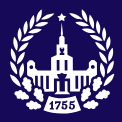
Moscow State University M. V. Lomonosov
-
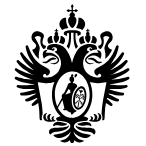
St. Petersburg State University
-
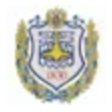
Bauman Moscow State Technical University
-

Tomsk State University
-

Peoples' Friendship University of Russia
-
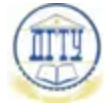
Don State Technical University
-

Moscow Institute of Physics and Technology
-
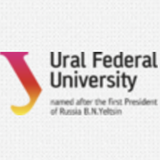
Ural Federal University
-

Kazan Federal University
-

Mesoamerican University
-

Istmo University
-

Mariano Galvez University of Guatemala
-

Regional University of Guatemala
-

Galileo University
-

Francisco Marroquín University
-

Rafael Landívar University
-

University of the Valley of Guatemala
-

University of San Carlos of Guatemala
-

Technological Institute of Tlaxcala Plateau
-

Golfo University
-

Technological University of South Sonora
-

Technological University of Huejotzingo
-

Tizimín Institute of Technology
-

Chilpancingo Institute of Technology

